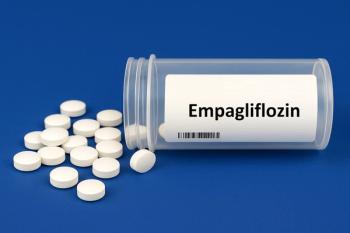
Tapentadol Vs Oxycodone Evaluated for Postoperative Gastrointestinal Adverse Drug Events
Postoperative pain can require opioids, which may lead to opioid-induced constipation.
Although tapentadol has a lesser effect on µ-opioid receptors, both tapentadol immediate release (IR) and oxycodone IR are associated with similar rates of gastrointestinal adverse drug events in patients hospitalized after orthopedic surgery, according to results published in Pain Physician.1
In a retrospective cohort study, researchers evaluated postoperative outcomes to determine the rates of these gastrointestinal adverse drug events with tapentadol IR vs oxycodone IR.
Electronic medical records were evaluated for patients admitted to the hospital between January 2018 and June 2019. Included patients received only tapentadol or oxycodone and did not receive the sustained-release form of these drugs, or other opioids during their stay.
The primary study outcome was gastrointestinal adverse drug events that occurred after surgery but during the patient’s hospital stay.
A total of 236 patients met inclusion criteria; 199 were included in the final cohort (tapentadol n=99; oxycodone n=100). Mean patient age was 66±12 years (56% women). Those in the tapentadol group were older, more likely to be women, and more likely to be undergoing a total hip arthroplasty. Surgeries included total knee arthroplasty (n=91; 46%), total hip arthroplasty (n=63; 32%), shoulder surgery (n=26; 13%), or other surgeries (n=19; 10%). Before hospitalization, 11% of patients were taking opioids, in doses of less than 50 mg morphine milligram equivalents per day. Median length of hospital stay was 4 days (interquartile range [IQR], 4 days).
All patients were prescribed either 50 mg to 100 mg tapentadol IR or 2.5 to 10 mg oxycodone IR for pain.
Adverse drug events included constipation, nausea or vomiting, and pruritus. In the tapentadol group, 51% of patients experienced gastrointestinal adverse drug events, compared with 53% in the oxycodone group (between-group difference, 2%; 95% CI, -11% to 16%). Following adjustment for potential confounders, tapentadol use was “not associated with a significant reduction of [gastrointestinal adverse drug events]” (odds ratio, 0.62; 95% CI, 0.32-1.20).
No instances of dizziness, dysphoria/hallucinations, respiratory depression, or death were reported.
In the tapentadol group, total median dosing was 300 mg (IQR, 150 mg-500 mg; dose/day, 75 mg [IQR, 33 mg-125 mg]). Total median dose of postoperative oxycodone was 50 mg (IQR, 23 mg-95 mg; dose/day, 16 mg [IQR, 8 mg-24 mg]). Total median postoperative oral morphine milligram equivalents were 95 mg and 75 mg in the tapentadol and oxycodone groups (IQR, 45 mg-165 mg and 41 mg-150 mg, respectively). Per day, the total median postoperative oral morphine milligram equivalents were 25 mg and 23 mg, respectively (IQR, 11 mg-40 mg and 13 mg-35 mg).
Study limitations include the use of only 1 referral hospital to create the patient cohort, the retrospective nature of the research, and potential issues with accuracy of medical record data.
“These results need to be replicated in clinical trials,” the researchers concluded. “Future studies should also investigate the patient population that may benefit most from the use of tapentadol for postoperative pain.”
Reference
- Wang X, Narayan SW, Penm J, Johnstone C, Patanwala AE.
Gastroinestinal adverse events in hospitalized patients following orthopedic surgery: Tapentadol immediate release versus oxycodone immediate release. Pain Physician. 2021;24(3):E309-E315.
Newsletter
Pharmacy practice is always changing. Stay ahead of the curve with the Drug Topics newsletter and get the latest drug information, industry trends, and patient care tips.





























































































































